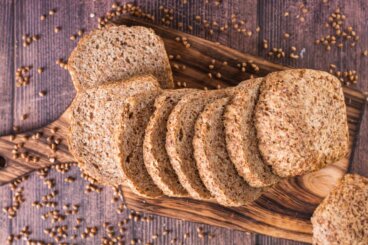How Does Diet Influence Oral Health in Children?

We’ve become accustomed to hearing that a healthy diet is essential for the proper growth and development of our children. However, despite the fact that the mouth also grows at the same pace as the rest of the body, little do we know about how food influences oral health in children.
Beyond sugar and cavities, there are other details about eating habits that can cause oral problems. Keep reading to help you improve your children’s oral health by starting with a good diet.
Learn how diet influences oral health in children
The Academic of Nutrition and Dietetics points out that a healthy diet leads to a healthy mouth and teeth as they grow. In contrast, unhealthy diets damage teeth and gums, thereby limiting children’s ability to eat and increasing oral disease. These are rich in sugars that can lead to tooth decay.
Sugar consumed directly or added to different food products is converted by the mouth’s own bacteria into acidic substances that destroy the tooth over time. This results in pain, inflammation, tooth loss, infection, difficulty in eating, and possible malnutrition, all of which have an impact on poor school performance and poor quality of life.
During the first year
From the first months of life, nutrition has a positive influence on oral and dental health. The very process of breastfeeding and sucking stimulates muscles, jaw development, and jaw structure.
A 2018 review, published in the Journal of Dental Research, disseminated that the practice of breastfeeding has a protective effect against misalignment of lower and upper teeth. In this regard, the organization Mounthhealthy recommends beginning to clean the baby’s gums with gauze or clean, damp towels a few days after birth. And, when the first tooth appears, brush them twice a day.
In complementary feeding
From 6 months of age, when babies begin to eat new foods, chewing should be stimulated, according to research published in The British Journal of Nutrition. This way, good bone, muscle, and functional development of the masticatory apparatus are maintained. Unlike what’s customary, for this stage, parents are encouraged to include hard, fibrous, and dry foods.

At preschool and school age
An online publication, supported by Cambridge University, makes it clear that in addition to diet, it’s important to establish good eating and oral hygiene habits at an early age. This stage is influenced by the eating style and role modeling of parents or caregivers. In addition, as the child grows up, the environment and environmental factors influence the selection of certain foods that affect oral health.
For example, the World Health Organization warns that some 514 million children in 2022 will suffer from health problems in their primary teeth. However, excess starches and sugars in the diet still unbalance oral health and increase the occurrence of cavities.
Of course, this problem is multifactorial. That’s why the WHO also emphasizes that it’s not only a matter of continued consumption of sugars, but also inadequate exposure to fluoride and lack of toothbrushing.
Tooth-damaging and tooth-protective foods
A beneficial eating style for oral health includes foods that protect teeth and excludes those that damage teeth. These are the central focus of selection for children’s nutrition as they grow.
Foods that stimulate salivary flow
Saliva is the mouth’s natural protective mechanism. PloSPathog magazine explains that it protects teeth and gums, rinses the mouth of bacteria, and keeps teeth free of plaque. Meanwhile, the University of Rochester Medical Center’s health encyclopedia reports that chewing fiber-rich raw fruits and vegetables stimulates salivation within 20 minutes after eating something with sugars and starches.
A 2020 publication in the journal Nutrients concludes that the best foods to stimulate saliva secretion are cherry tomatoes, natural yogurt, and citrus juices, such as lemon, orange, tangerine, or grapefruit, among others. Other foods include apples, nuts, green leafy vegetables, dark chocolate, ice cream, tea, and, of course, water. In addition, although it’s not a food, sugarless gum is also a saliva producer.
Foods that prevent dental plaque
Apples and carrots are high in fiber, as well as vitamin A, which strengthens tooth enamel. But, it’s important to prepare them whole for your kids and not in the form of juices! Likewise, leafy greens such as kale, spinach, chard, and cabbage can eliminate any leftover food.
Although they’re not recommended for children because of their caffeine content, green tea and black tea are also anti-cariogenic foods. They contain substances called catechins which, according to a review published by Pharmacognosy Review, have a bactericidal effect against Streptococcus mutans. Even foods with fluoride are indicated as protective agents.

Foods that remineralize teeth
Cheese, unsweetened natural yogurt, kefir, milk and other dairy products help to recover lost minerals. Also, they allow the formation of tooth enamel. For example, the anticariogenic potential of white cheese is explained in the European Journal of Dentistry. Among the mechanisms we can highlight the following:
- Stimulates salivary flow.
- It increases the concentration of calcium in the bacterial plaque.
- The milk protein in cheese, called casein, is also anticariogenic.
In addition to cheese and other dairy products, vegetables such as broccoli, tofu, green leaves, legumes and sesame seeds should also be part of this list.
Harmful foods
The foods with the highest risk of causing cavities are cookies, bakery products, and sweets in general. We’ll leave you this list of foods to avoid:
- Sticky foods: Dried figs, granola bars, raisins, oatmeal cookies, peanut butter, honey, molasses, cough syrups, candy, and jelly beans.
- Starchy foods: White breads, processed cereals, and potato chips, among others.
- Soft drinks: These are the main source of added sugar in children and adolescents.
Other beneficial tips regarding oral health in children
As you can see, nutrition has a very important influence on oral health in children. Therefore, remember to maintain breastfeeding for at least the first 6 months, stimulate chewing with solid foods, establish good eating and oral hygiene habits, and include non-cariogenic and tooth-protective foods. In addition, take your child to the dentist regularly from the first year of age or when the first primary tooth appears.
All cited sources were thoroughly reviewed by our team to ensure their quality, reliability, currency, and validity. The bibliography of this article was considered reliable and of academic or scientific accuracy.
- Academy of Nutrition and Dietetics. Eatright.org. Eat right for a healthy mouth and teeth. 18 de febrero 2022. https://www.eatright.org/health/wellness/healthful-habits/eat-right-for-a-healthy-mouth-and-teeth
- Bozorgi, C., Holleufer, C., & Wendin, K. (2020). Saliva Secretion and Swallowing-The Impact of Different Types of Food and Drink on Subsequent Intake. Nutrients, 12(1), 256. https://doi.org/10.3390/nu12010256
- Goenka, P., Sarawgi, A., Karun, V., Nigam, A. G., Dutta, S., & Marwah, N. (2013). Camellia sinensis (Tea): Implications and role in preventing dental decay. Pharmacognosy reviews, 7(14), 152–156. https://doi.org/10.4103/0973-7847.120515
- Gul, P., Akgul, N., & Seven, N. (2018). Anticariogenic potential of white cheese, xylitol chewing gum, and black tea. European journal of dentistry, 12(2), 199–203. https://doi.org/10.4103/ejd.ejd_4_18
- Le Révérend, B. J., Edelson, L. R., & Loret, C. (2014). Anatomical, functional, physiological and behavioural aspects of the development of mastication in early childhood. The British journal of nutrition, 111(3), 403–414. https://doi.org/10.1017/S0007114513002699
- Linas, N., Peyron, M. A., Eschevins, C., Hennequin, M., Nicolas, E., & Collado, V. (2020). Natural food mastication capability in preschool children according to their oral condition: A preliminary study. Journal of texture studies, 51(5), 755–765. https://doi.org/10.1111/jtxs.12536
- Mounthhealthy. ADA. Breastfeeding. https://www.mouthhealthy.org/all-topics-a-z/breastfeeding
- Organización Mundial de la Salud (2023). Salud Bucal. https://www.who.int/news-room/fact-sheets/detail/oral-health#:~:text=Globally%2C%20an%20estimated%202%20billion,and%20changes%20in%20living%20conditions.
- Peres, K. G., Chaffee, B. W., Feldens, C. A., Flores-Mir, C., Moynihan, P., & Rugg-Gunn, A. (2018). Breastfeeding and Oral Health: Evidence and healthy. Challenges. Journal of dental research, 97(3), 251–258. https://doi.org/10.1177/0022034517738925
- Vila, T., Rizk, A. M., Sultan, A. S., & Jabra-Rizk, M. A. (2019). The power of saliva: Antimicrobial and beyond. PLoS pathogens, 15(11), e1008058. https://doi.org/10.1371/journal.ppat.1008058
This text is provided for informational purposes only and does not replace consultation with a professional. If in doubt, consult your specialist.








